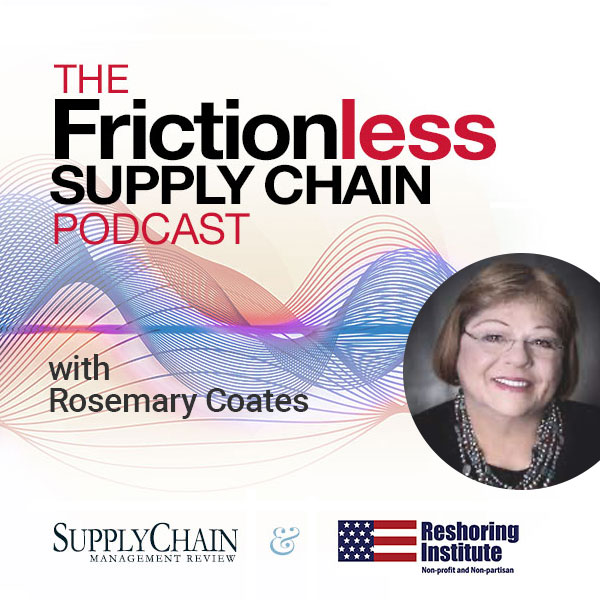Toxic work environments, a perceived lack of trust, limited opportunities for growth and development, and concerns regarding compensation are among the top concerns of supply chain employees according to the 2023 Employee Satisfaction Survey. As a result, 77% of employee turnover can be attributed to poor management, says Simon Rakosi, co-founder and CEO of technology company Butterfly.ai.
“In today’s corporate landscape, understanding why employees decide to leave has become crucial,” Rakosi notes. “This highlights an urgent need for companies to invest in effective management training and support.”
The survey was conducted by Peerless Research Group on behalf of Supply Chain Management Review and technology company Butterfly.ai. The purpose was to examine key areas of satisfaction in the workplace, including career development, work engagement, compensation, relationship management, benefits and work environment. One hundred and thirty people responded to the survey, which was conducted among the Supply Chain Management Review subscriber base, and the results have a margin of error of +/- 7.2%.
Respondents came from various position levels within companies, including 26% that listed manager as their job title, 22% as senior manager and 12% each at the individual contributor or manager/C-level.
Employee investment
If poor management is a top reason for employees leaving, then career development would seem to be a prime area where companies can invest in their talent. But, according to the survey, 30% of respondents either disagree or strongly disagree when asked if they are satisfied with the investment their organization has made in their training. Another 18% neither agreed nor disagreed.
Conversely, 71% either agree or strongly agree that they are being given opportunities to apply their expertise. Additionally, nearly half (47%) agree or strongly agree that career advancement opportunities are available.
Employees, generally speaking, are also engaged with their workplace. Ninety percent of respondents believe they give their best effort, and 84% agree or strongly agree that they are so involved in their work that the day goes beyond quickly. Those agreeing or strongly agreeing that they are inspired to meet their work goals reached 78% and 74% feel completely involved in their work.
“As we delve into the challenges faced by our frontline workers, it’s essential to recognize that the primary reason for their attrition isn’t just about pay,” Rakosi says. “[It] encompasses feeling fairly treated and respected, being valued and appreciated, finding joy and meaning in their work, and crucially, fostering a positive relationship with their managers. It’s evident that addressing these emotional facets is paramount in retaining and supporting our invaluable frontline workforce.”
In fact, the survey found that 59% are satisfied with their overall compensation and only 16% said they disagreed or strongly disagreed with that statement.
Remote work opportunities
Like many industries, supply chain has grappled with the remote work trend. Some jobs simply can’t be completed remotely, but others can. The survey sought to identify the feelings of the workforce in this area.
Fifty-seven percent of employees prefer a hybrid work environment while 22% said their preference was remote, and 20% said onsite full time. Only 8% of organizations in the survey are fully remote, while 32% are full-time onsite and the remainder offer a hybrid option.
Rakosi cites data from a Gallup survey that found that only 28% of those employees that are exclusively remote feel strongly connected to their organization. That helps set the stage for some of the comments the SCMR/Butterfly.ai survey collected from respondents.
What do you think?
Respondents were given the opportunity to provide feedback on things their organization should do to make it a better workplace. Top comments focused on improving healthcare, more communication including job openings in other departments, better resource allocation, higher wages and eliminating fear. Additional comments also noted that leaders need to be better leaders, provide better guidance, and micro-manage less.
“In the evolving world of work, a key area of focus is relationship management. Our data underscores its significance,” Rakosi says. “To bolster peer interactions, consider team-building activities and workshops. For improving supervisor-employee rapport, regular one-on-one check-ins can make a huge difference. We can empower our teams further by offering training sessions on decision-making, ensuring they feel trusted and valued. An atmosphere of mutual respect is fundamental; workshops on etiquette can facilitate this.”
Employees also asked for more resources, more technology, more training, and raises/bonuses that reflect performance.
“Town-hall meetings can greatly improve communication from management for corporate employees and shift huddles would do the same for frontline workers,” Rakosi says. “Lastly, let’s not forget the power of recognizing hard work; strong performance deserves to be celebrated. By embracing these strategies, we can bridge the gaps and fortify relationships within our organizations.”
There’s some good, too
As many comments that can be perceived as negative came in, an equal number of positive comments were reported, indicating that there are plenty of happy employees in supply chain.
Among the positives noted by respondents is the ability to apply new skills or try new things, being able to take time off as needed, benefits, continuous learning opportunities, a family-oriented atmosphere, internal collaboration and social and environmental impact.
“We asked respondents what they genuinely appreciate and value about their workplace. The responses were both insightful and heartening. Many expressed their appreciation for the autonomy they have, emphasizing the trust and space to apply their skills,” Rakosi says. “Continuous learning stood out, with employees valuing growth and knowledge expansion. A positive work environment, characterized by strong team dynamics, was highlighted, as well as the flexibility offered in work schedules. Respect, integrity, and open communication were underscored, followed by the warmth of a familial atmosphere and the depth of long-term relationships. Additionally, competitive benefits and a clear sense of mission and social impact made the list. These findings shed light on the pillars that truly make an organization a preferred place to work.
“With a direct correlation between heightened engagement and organizational success, the advantages range from cost savings to enhanced efficiency. By integrating these strategies, we pave the way for a dynamically engaged workforce propelling the organization to new heights,” he adds.
SC
MR


More Supply Chain Management
- Joseph Esteves named CEO of SGS Maine Pointe
- Employees, employers hold divergent views on upskilling the workforce
- April manufacturing output slides after growing in March
- Q1 sees a solid finish with positive U.S.-bound import growth, notes S&P Global Market Intelligence
- 6 Questions With … Sandeep Bhide
- MIT CTL offering humanitarian logistics course
- More Supply Chain Management
Latest Podcast

 Explore
Explore
Topics
Business Management News
- Joseph Esteves named CEO of SGS Maine Pointe
- Employees, employers hold divergent views on upskilling the workforce
- April manufacturing output slides after growing in March
- Q1 sees a solid finish with positive U.S.-bound import growth, notes S&P Global Market Intelligence
- 6 Questions With … Sandeep Bhide
- MIT CTL offering humanitarian logistics course
- More Business Management
Latest Business Management Resources

Subscribe

Supply Chain Management Review delivers the best industry content.

Editors’ Picks




